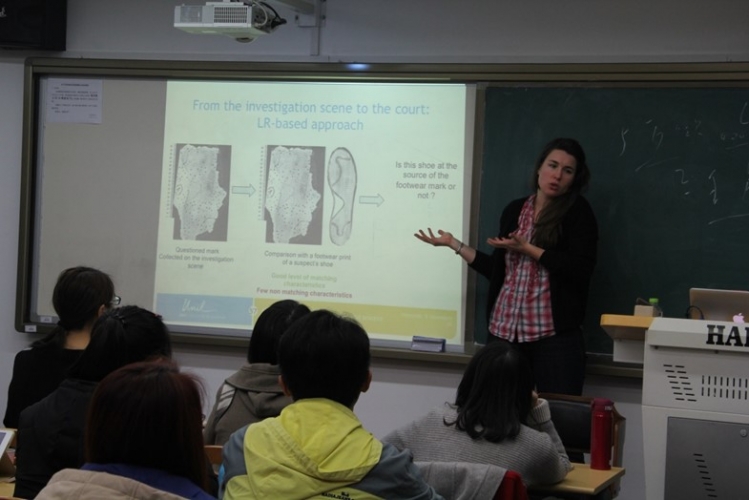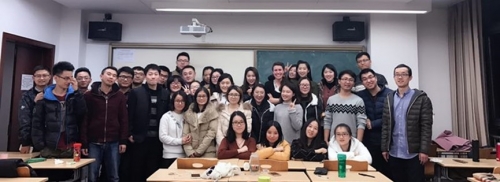Invited by the “2011 Plan” China Collaborative Innovation Center of Judicial Civilization, the "111 Plan" Base for Evidence Science Innovation and Talent Recruitment and the Institute of Evidence Law and Forensic Science, CUPL, Dr. Durdica Hazard from Swiss Lausanne University successfully gave nine inspiring and interesting lectures on topic of " Evidence from the Scene " for CUPL graduate students from November 8th to November 29th, 2016.

Dr. Durdica Hazard is a Senior Lecturer of Lausanne University. Her mentor is Professor Pierre Margot who is the Leading teacher of forensic science field. She was employed by the United Nations International Independent Investigation Committee (Lebanon) to investigate the assassination of former Lebanese Prime Minister Rafik Hariri (February, 2007 – November, 2007). Since then, Dr. Durdica Hazard returned to the Lausanne University, Switzerland, and continued to research work. She compared the influence of the epistemology method and the empirical epistemology method at the scene of the crime in the process of investigation.
The course mainly involves the following aspects: students will learn various principle, concept and paradigm from the court, scientific and cultural background and investigation; students can describe and understand the hidden information of the material evidence, then eventually grasp the evolution of the model of scientific fact that can be used in the trial; students are able to identify the key investigation which might make influence to the evidence chain; students can gain the ability of in-depth analysis of a case and locking breakthrough of a case accurately.
To be specific, the course is divided into three parts: 1. Dr. Durdica Hazard usually gives a lecture of the main content of the course. The content of the course was detailed and involved almost each area of forensic science. It includes the basic knowledge of material evidence, the evidence of protection and how to achieve mastery through numberous kinds of information and the overall analysis of all kinds of material evidence. 2. Students were divided into groups to learn and analyse cases. Dr. Durdica Hazard selected international typical cases, and distributed to each study group for data collection and reporting. Every student can be mounted the platform to show their learning results. From the results, students gained certain case analysis ability and integrated use of physical evidence. 3. Assessment. The course is assessed by written examination. The examination contains the conventional multiple choices and there was also a vivid scene of the crime to the exploration of figure type questions. In addition, Dr. Durdica Hazard invited Wang Lianming who is from the Beijing Municipal Public Security Bureau to help students create a comparable perspective and to guide the students understand the deep sense "the evidence from the scene" from the practical case—traffic accident scene investigation and western concept of crime scene investigation.

The course “Evidence from the Scene” is one of the typical demonstrations of close cooperation of China University of Political Science and Law and Lausanne University in the field of forensic science. It spends more than 2 years to "perform" from the idea of "original" and "a long design". During this period, Dr. Durdica Hazard has been to China for 5 times and conducted courses 3 times. Dr. Durdica Hazard passed the thought of "how to find the evidence from the crime scene according to the “logical, rational thinking way” to Chinese students.